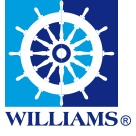The ship “Pacific South” docked at the Port of Paranaguá to set new records in the Export Corridor. In addition to being a bulk carrier of 292 meters in length and 45 in breadth (width) – the largest ever received at the complex to date – the vessel will carry a historic volume for the segment of solid bulk at Paraná terminals. There will be 103 thousand tons of soybean meal. “Both the volume and the size of the ship that we are going to operate attest to our operational capacity. Such an action requires qualified port workers, experienced piloting and infrastructure capacity, both onshore and offshore”, says the CEO of Portos do Paraná, Luiz Fernando Garcia. The vessel docked in the late afternoon of Monday 08 at berth 214, one of three in the Export Corridor of the Port of Paranaguá. With the flag of the Marshall Islands, the ship “Pacific South” came from the port of Shanghai, in China, and arrived at Paranaguá Bay on the last day 1. The 103 thousand tons of soybean meal will be loaded from three terminals. About 84 thousand tons will leave Coamo; 15 thousand from Cotriguaçu; and four thousand tons of public silos (horizontal). According to the company responsible for the operation, Cargill, the loading of the Pacific South should take about five days, if the weather conditions help and there are no downtime due to rain or excessive humidity. The bran will go to the port of Amsterdam, in the Netherlands. The volume of 103 thousand tons – enough to load 3,400 trucks – exceeds, in 13 thousand tons, the previous record registered just over a year ago. On May 27, 2019, the 254-meter Chinese vessel Lan Hua Hai loaded 90,000 tons of soybean meal. This time, the vessel is 38 meters larger. On average, bulk carriers received at the Port of Paranaguá measure between 199 and 229 meters in length. These, in general, usually receive just over 60 thousand tons of cargo (soy, corn or bran). In the Corridor, there are six shiploaders with the capacity to load around one thousand tons per hour. The equipment carries, by conveyor belts, the load of 11 different terminals.
Source: Portos e Navios






